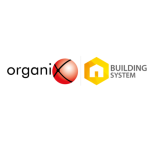Introduction
Sandwich panels are a common choice in construction due to their superior insulation and structural integrity. However, under harsh weather conditions, it is critical to ensure that these panels are properly waterproofed.
In this article, we'll look at some of the most inventive sandwich panel waterproofing systems, which are particularly successful in adverse weather situations.
Understanding the Challenge
Extreme climates, whether defined by high heat, torrential rains, or cold temperatures, provide considerable problems for construction materials.
Waterproofing is required for sandwich panels, which are commonly used in roofs and walls, to prevent water penetration, which can cause structural damage, mold development, and energy inefficiency.
Advanced Waterproof Membranes
One of the most recent advances in waterproofing is the creation of high-performance membranes. These membranes are commonly constructed of thermoplastic polyolefin (TPO) and ethylene propylene diene monomer (EPDM). They have high flexibility, UV resistance, and durability, making them perfect for harsh environments.
Advantages:
- Flexibility: These membranes may stretch and compress as temperatures vary, preventing fractures.
- Durability: They resist UV radiation and severe weather, providing long-term protection.
- Ease of Installation: Installation is simple since they are often available in big sheets and can be rapidly and simply fitted over sandwich panels.
Liquid-Applied Waterproofing Solutions
Liquid-applied waterproofing membranes are gaining popularity because they can form a seamless barrier over complicated forms and joints. These solutions frequently employ sophisticated polymers and can be sprayed or rolled over the surface of sandwich panels.
Advantages:
- Seamless Coverage: Removes any possible weak areas in seams and overlaps.
- Adaptability: Can be applied to a variety of substrates and forms, providing comprehensive covering.
- Quick Curing: Modern formulations can cure quickly, even in harsh weather conditions.
Nanocoating Technology
Nanotechnology is transforming waterproofing through the creation of nano-coatings. These coatings penetrate the surface of the sandwich panels at a microscopic level, forming an ultra-thin yet very efficient waterproof barrier.
Advantages:
- High Penetration: Nano-coatings penetrate microscopic holes and cracks, offering complete protection.
- Durability: Weatherproof and chemically resistant, assuring long-term performance.
- Non-intrusive: The ultra-thin layer does not add much weight or thickness to the panels.
Self-healing Waterproofing Systems
Self-healing polymers are an interesting development in the waterproofing industry. These systems employ materials that can heal tiny defects on their own, such as small fractures and punctures that are typical in harsh climates.
Advantages:
- Longevity: Increases the lifespan of the waterproofing system by continually mending small damage.
- Reduced Maintenance: Reduces the need for regular inspections and repairs.
- Cost-Effective: Although the initial expenditure is larger, the long-term savings in maintenance expenses can make it financially effective.
Integrating Insulation and Waterproofing
In harsh temperatures, combining insulation and waterproofing can improve the performance of sandwich panels. Hybrid systems that include thermal insulation and waterproofing layers can enhance energy efficiency while also offering strong protection against water infiltration.
Advantages:
- Energy Efficiency: Better insulation lowers heating and cooling costs.
- Comprehensive Protection: Dual-function layers provide thermal and moisture barriers.
- Space Saving: Combining both functions into a single system saves space and decreases material consumption.
Smart Waterproofing Systems
The incorporation of smart technology into waterproofing systems is a growing trend. These systems employ sensors and IoT technologies to monitor the waterproofing layer's integrity in real time, alerting to any breaches or possible concerns.
Advantages:
- Real-Time Monitoring: Instant notifications for breaches enable rapid repairs, avoiding substantial damage.
- Data analytics: Continuous monitoring gives vital information about the waterproofing system's performance and longevity.
- Preventative Maintenance: Early detection of problems decreases the possibility of serious harm.
Conclusion
Innovative waterproofing strategies are critical for preserving the integrity and performance of sandwich panels in harsh environments. Advanced membranes, liquid-applied solutions, nano-coatings, self-healing systems, integrated insulation, and smart technologies are setting the standard for strong and long-lasting waterproofing solutions. By remaining up to date on these developments, builders and property owners can guarantee that their structures are secure, energy-efficient, and durable regardless of the weather.
As we continue to push the frontiers of what is possible in construction, these cutting-edge approaches promise a future in which structures can resist even the most extreme climates with ease and efficiency.





_(2).jpg)
Comments